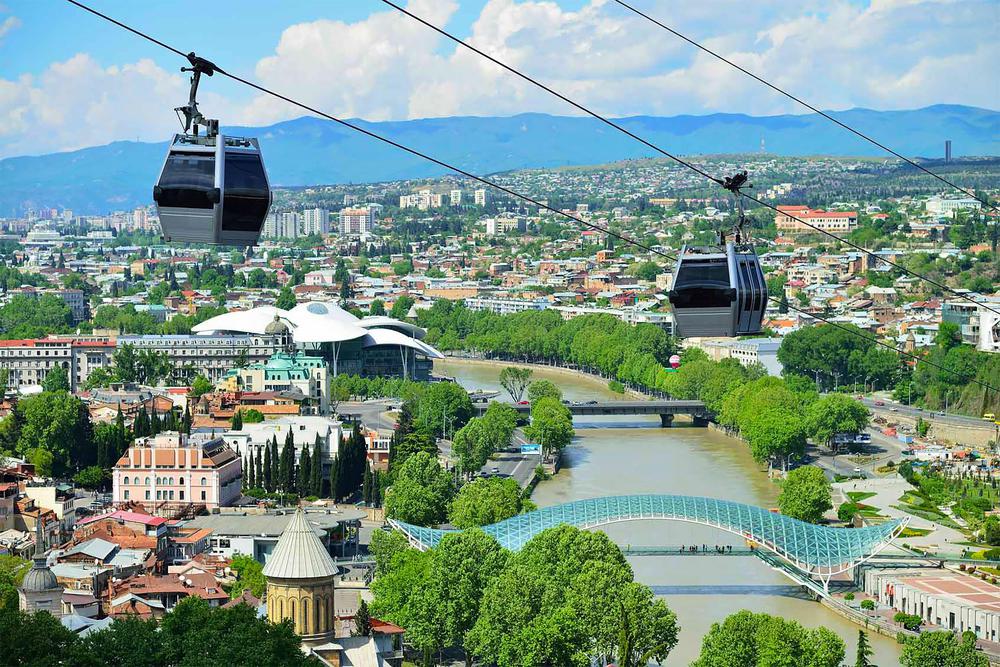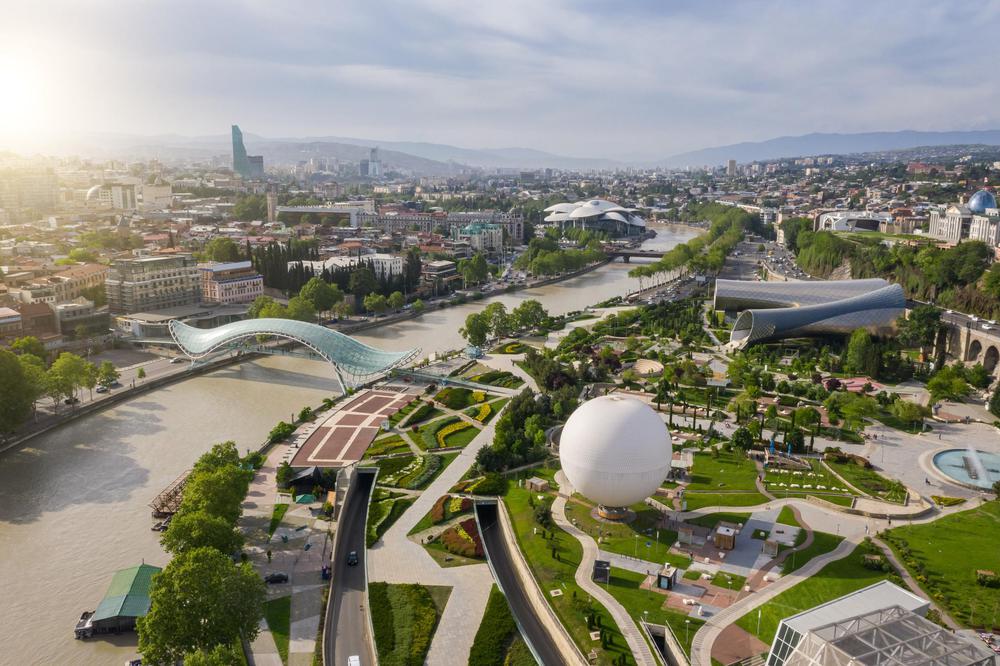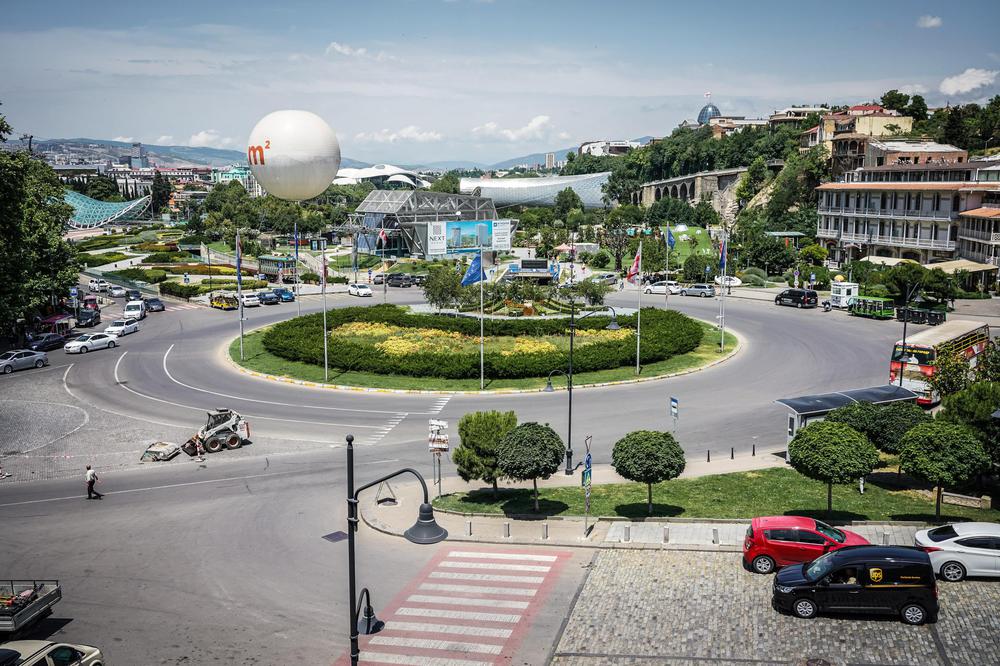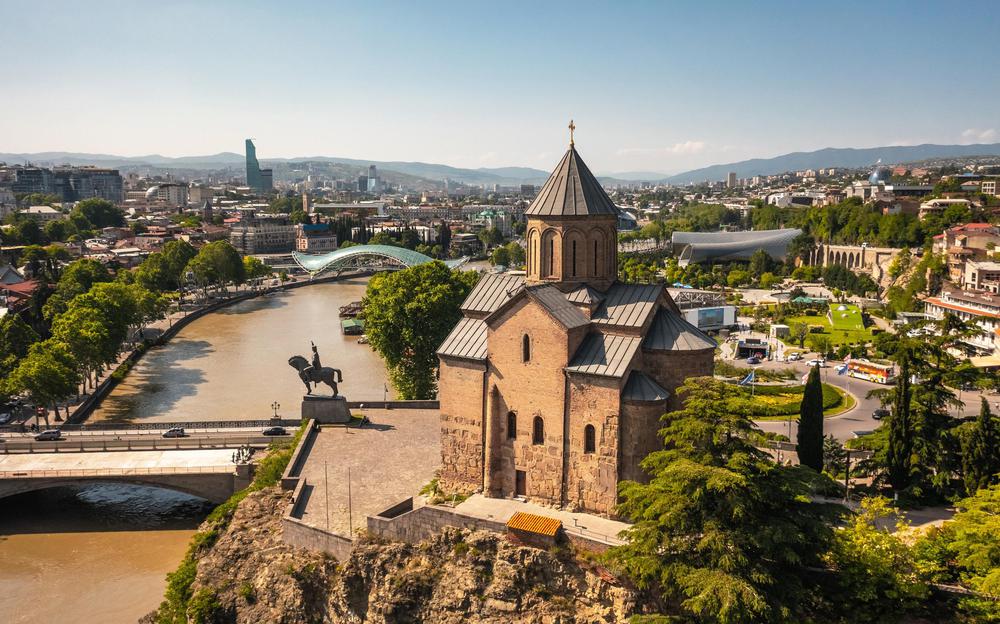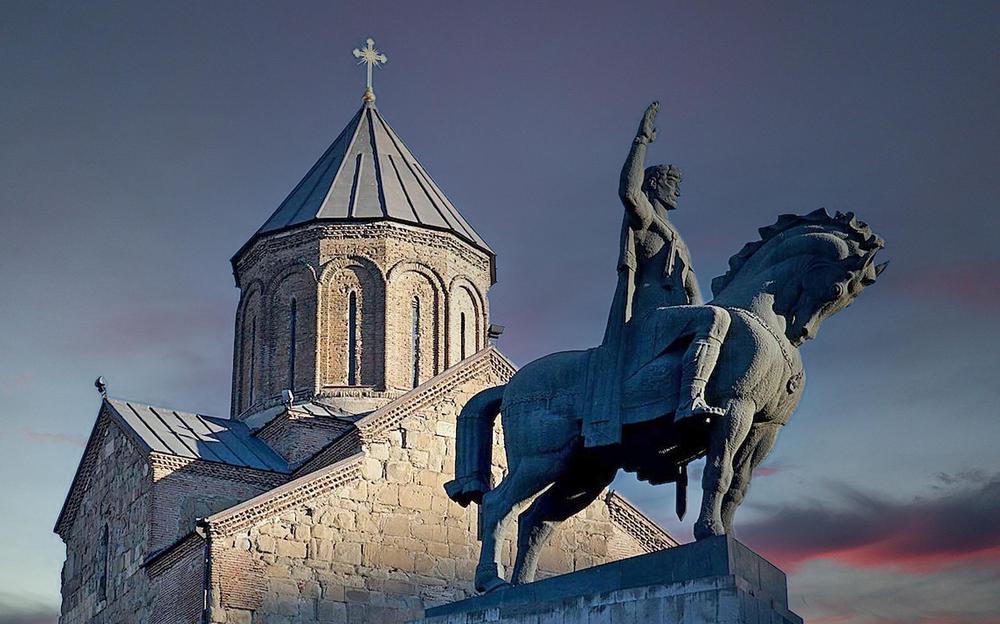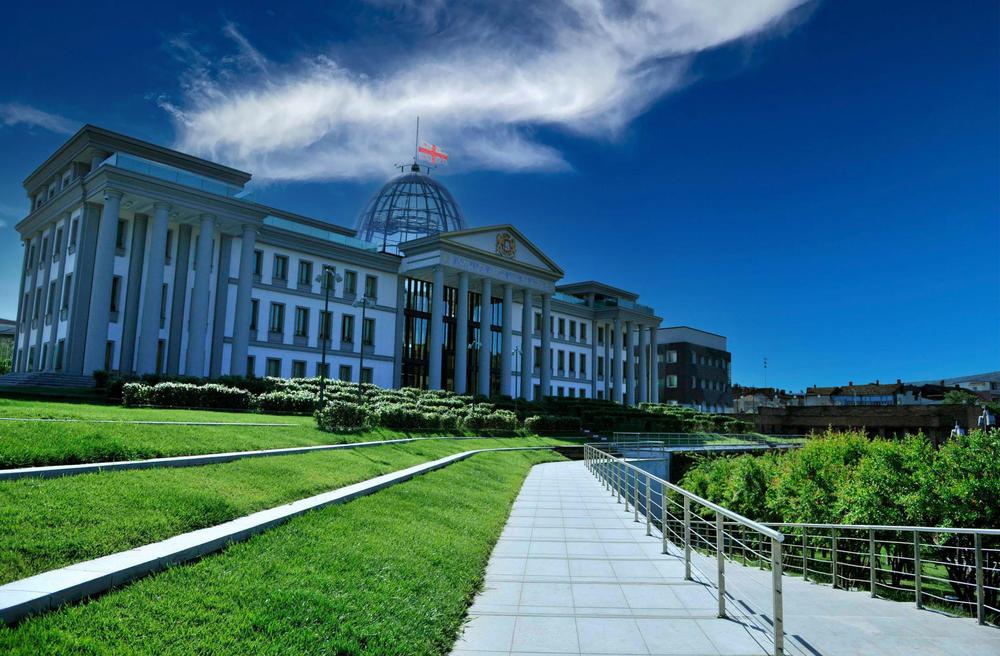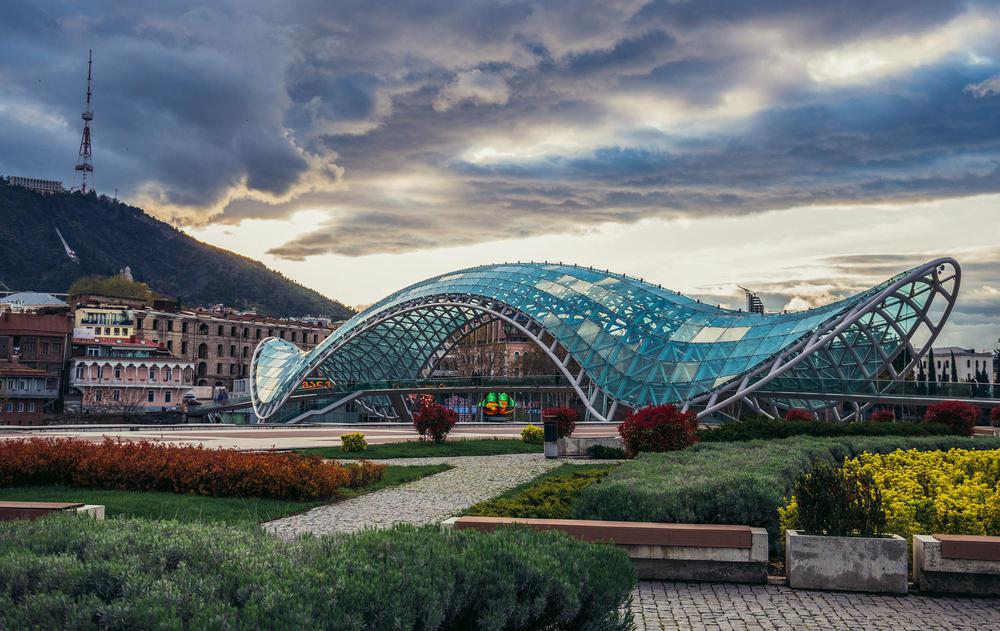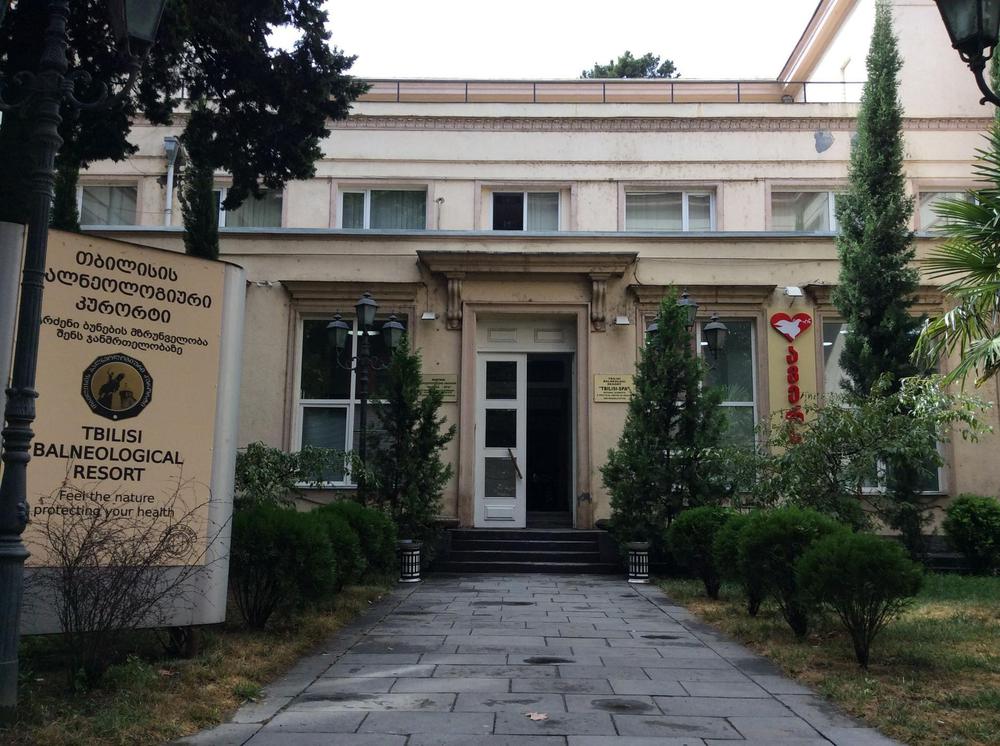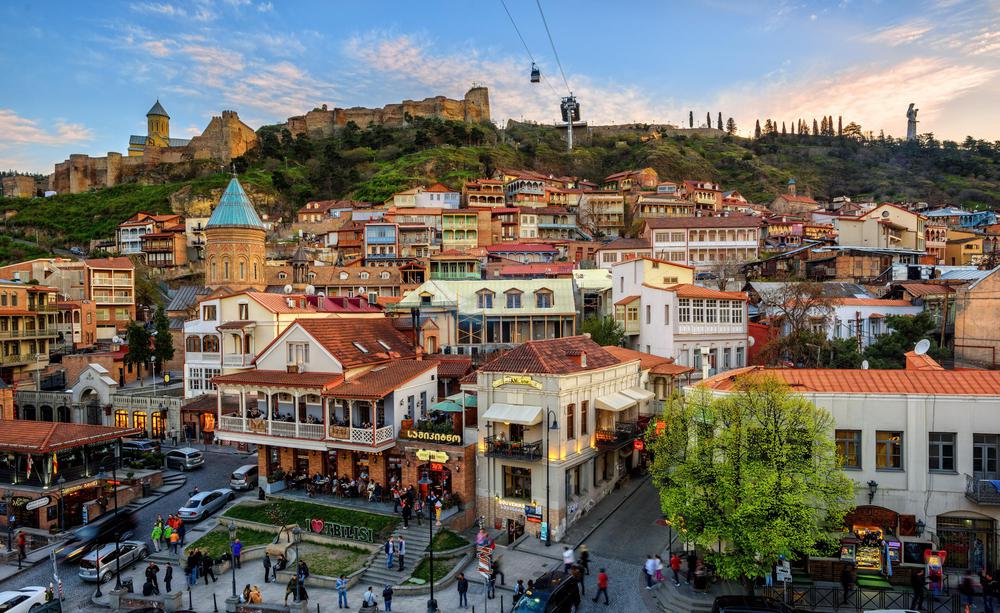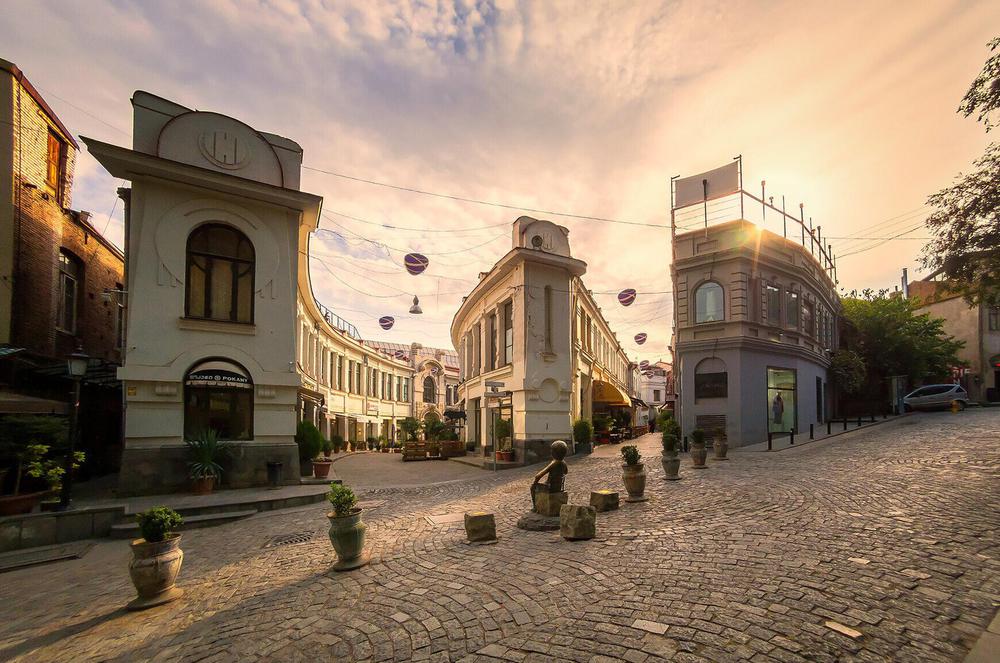Nestled in the historic Avlabari district of Old Tbilisi, just off the Ketevan Tsamebuli Square, stands the Etchmiadzin Church, a living testament to the city's rich religious and cultural tapestry. Also known as Saint Sargis Church, this spiritual monument carries an intriguing narrative of transformations and restorations, making it a captivating site for both religious and architectural enthusiasts alike.
Constructed between 1806 and 1808 by skilled masters from Vakharshapat and funded by Tbilisi's residents, the brick-built Etchmiadzin Church initially featured a hall-like structure. Over time, it underwent various renovations, becoming an "inscribed cross" style church in 1846, a prevalent design in medieval Georgian and Armenian architecture. The church's dome, a significant architectural feature, is supported by four round pillars, lending to its robust and imposing stature.
A close examination of Etchmiadzin Church reveals a striking façade where the layers of brick are meticulously accentuated. Inside, plaster walls adorned with frescoes from the second half of the 19th century exhibit a charming contrast to the external brickwork. The church's window dimensions, with a notable width of 1.5 meters (approximately 5 feet), are another intriguing architectural detail.
The Etchmiadzin Church enjoys a prime location overlooking the iconic Narikala Fortress, allowing for breathtaking views of the Ketevan Tsamebuli Square, the ancient baths, Mtatsminda, the TV Tower, and the funicular.
Despite its frequent renovations during the 19th and 20th centuries, the church retains its original charm and serves as a symbol of the Armenian Apostolic Church in Georgia. The most recent renovation took place from 2006 to 2010, with support from the pious Armenian diaspora in the Western US and the Mother See of Holy Etchmiadzin.
The church's post-restoration sanctification ceremony was conducted by His Holiness Garekin II, Supreme Patriarch and Catholicos of All Armenians, during his pontifical visit to Georgia in 2011. This moment marked a new chapter in the church's long-standing history.
Adjacent to the Etchmiadzin Church, the "Hayartun" Educational - Cultural and Youth Center was established in 2011. The center fosters various educational and creative programs aimed at preserving the Armenian language, restoring national-religious holidays, traditions, and strengthening Armenian-Georgian cultural ties.
The Etchmiadzin Church, with its centuries-old history and architectural significance, serves as a bridge connecting the past and the present, underscoring Tbilisi's vibrant religious and cultural diversity.

